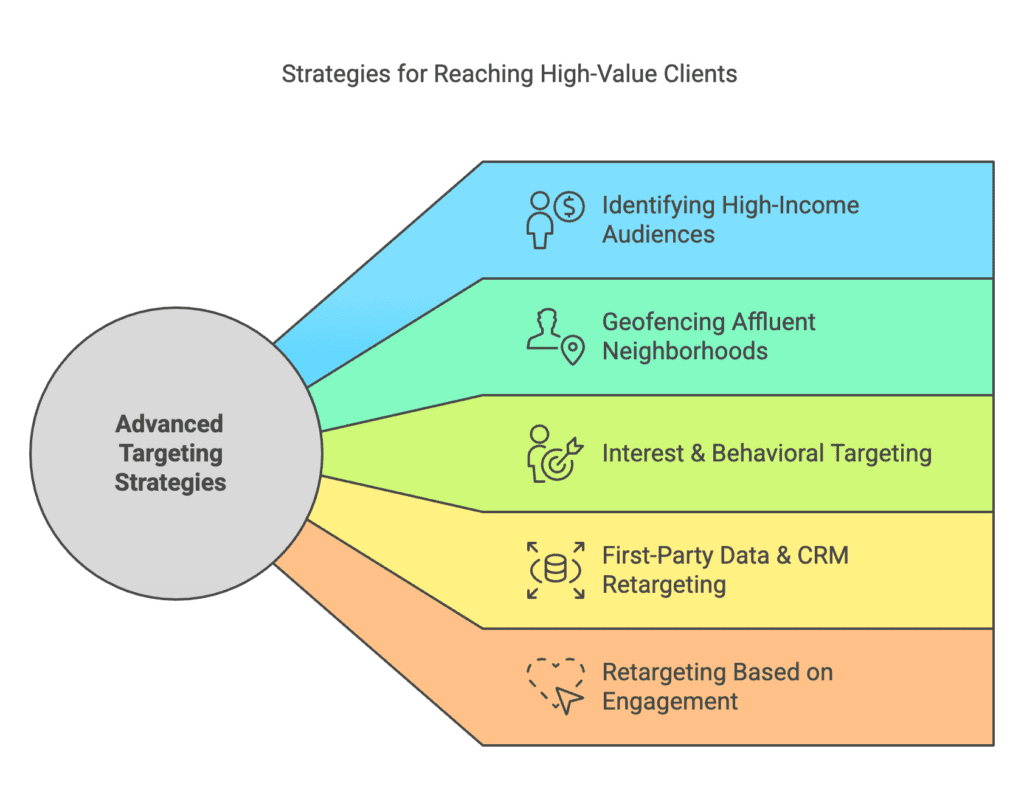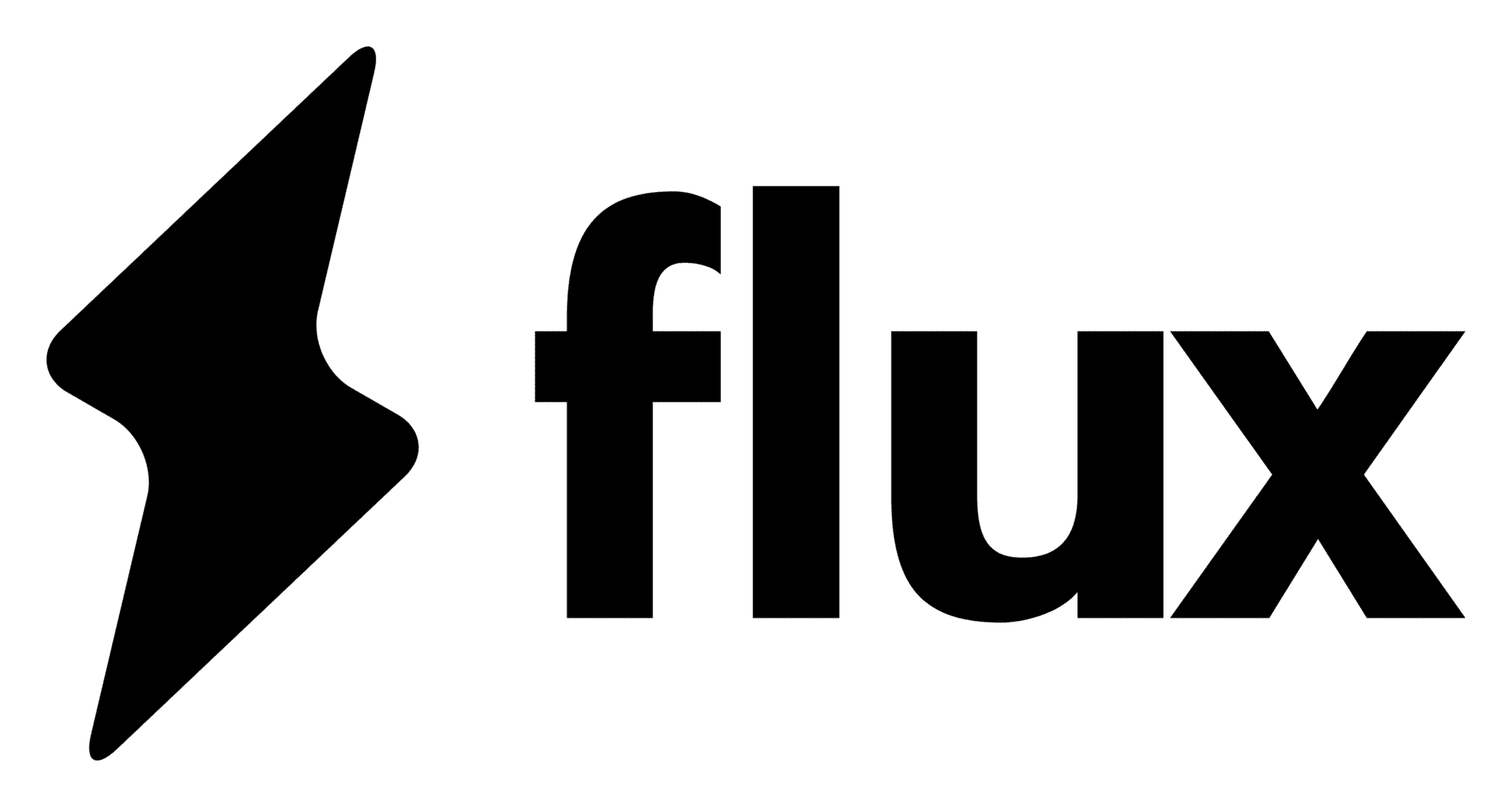Introduction: Why Targeting Matters for Local Businesses
Not all customers are created equal. Some will browse your website but never book, while others are actively looking for high-ticket services and ready to buy. The difference? Who you’re targeting.
Too many businesses waste money advertising to the wrong audience—people who aren’t in the right income bracket, aren’t actively looking for services, or don’t have the decision-making power. The key to profitable advertising isn’t just getting more clicks, it’s making sure those clicks come from the right potential customers.
So, how do you filter out low-value leads and zero in on high-value clients? This guide will walk through advanced targeting tactics that help businesses like contractors, legal professionals, auto services, and B2B service providers reach affluent, high-intent customers.
If you’re looking for help setting up a profitable ad campaign, check out our digital advertising services.

Identifying High-Income Audiences (When Price Matters)
Some services are not for everyone—they require higher budgets or specialized needs. Whether you offer legal services, home renovations, premium auto care, or B2B consulting, your ideal client likely falls into a higher income bracket or a specific buyer profile.
What This Means for You
- If you run a law firm specializing in business law, estate planning, or corporate legal services, your ideal clients are likely business owners or high-net-worth individuals, not general legal inquiries.
- If you’re a home services contractor specializing in high-end renovations, you don’t want clicks from people looking for a $200 handyman job—you want homeowners investing in premium upgrades.
- If you run a B2B service like consulting or equipment leasing, you need to filter out small, non-decision-makers and focus on business owners and executives who actually have buying power.
How Digital Ads Help You Target Wealthier Clients
- Google Ads: You can refine your audience based on household income brackets, showing ads only to the top 10%, 20%, or 30% of earners in your area.
- Meta Ads: While Facebook and Instagram don’t have direct income targeting, you can reach affluent customers based on their interests and behaviors, such as luxury travel, high-end home improvement, or professional services.
- Exclusion Matters: Just as important as targeting the right people is excluding lower-income groups to avoid wasted ad spend.
If your service isn’t price-sensitive, this may not be a concern—but if pricing is a factor, targeting high-income audiences can improve lead quality and conversion rates dramatically.
Geofencing Affluent Neighborhoods (Reaching the Right Zip Codes)
Location matters. Where people live often tells you about their spending habits. If you provide home services, legal help, or auto repair, targeting high-income areas can instantly refine your audience.
How This Works for Local Businesses
- Contractors & Skilled Trades: A high-end kitchen renovation company in Toronto doesn’t want to advertise to apartment renters—they need homeowners in affluent areas.
- Legal Services: Estate planning and business law firms benefit from targeting neighborhoods where business owners and high-income professionals live.
- Auto Services: Luxury vehicle mechanics or detailing services should focus on high-end neighborhoods where residents drive premium cars.
How Digital Ads Help You Target by Location
- Google Ads: You can set location-based bid adjustments to increase your presence in wealthy neighborhoods while reducing spend in areas that don’t match your ideal clientele.
- Meta Ads: Facebook and Instagram allow radius targeting around upscale shopping districts, golf clubs, business hubs, or suburban communities known for higher-income homeowners.
Pairing income-based targeting with location-based targeting can further refine your audience and improve conversion rates.
Interest & Behavioral Targeting (Reaching People Based on What They Do, Not Who They Are)
Income and location are great filters, but sometimes what a person is actively searching for is even more important. Instead of relying on demographic factors, interest and behavioral targeting lets you reach people based on what they engage with online.
Who This Works For
- Legal & B2B Services: Target people actively reading about business law, contract disputes, or tax planning.
- Home Services: If someone is searching for “luxury home renovations” or “smart home installations,” they’re likely a high-value lead.
- Automotive Services: Someone researching “ceramic car coating” or “best mechanics for luxury cars” is much more valuable than someone looking for “cheap oil change near me.”
First-Party Data & CRM Retargeting (Maximizing Owned Data)
If you’ve been running a business for a while, you already have one of the most powerful targeting tools available—your own customer data.
With third-party cookies disappearing, first-party data is becoming more valuable than ever. Instead of relying on external platforms to track your audience, you can build and own your own customer list to create highly effective ad campaigns.
How First-Party Data Helps You Target Smarter
- Google Ads & Meta Ads allow you to upload customer email lists to retarget past clients or build lookalike audiences.
- Email & SMS marketing lets you follow up with warm leads, improving conversion rates.
- Capturing customer data through lead magnets, free consultations, and contact forms ensures you own your audience instead of depending on ad platforms.
If you’re not already collecting and using first-party data, now is the time to start. It allows you to run ads that target your most valuable customers while reducing reliance on third-party tracking.
Retargeting Based on Engagement (Who’s Actually Interested?)
Sometimes, the best targeting isn’t who they are, but what they’ve already done. Someone who clicked your ad, watched a video, or visited your website but didn’t convert is a high-intent lead—but you can’t assume they’ll come back on their own.
Who This Works For
- A law firm that gets lots of website visits but few inquiries.
- A contractor whose potential clients browse project galleries but don’t book a consultation.
- An auto shop where people check pricing pages but don’t make an appointment.
Retargeting warms up potential customers so they’re more likely to choose you when they’re ready to buy.
For a deeper dive into how digital marketing is changing, check out our Cookieless Retargeting Guide.
Final Thoughts: Better Targeting = Higher ROI
By refining your targeting, you spend less on wasted clicks and more on high-value leads. Instead of guessing who your best customers are, digital advertising helps you reach them directly.



